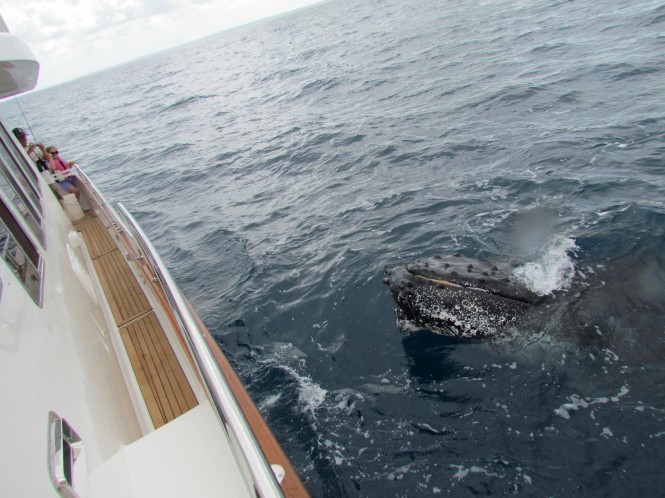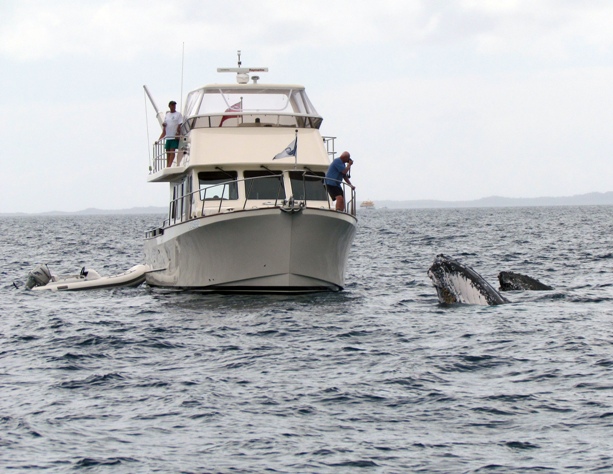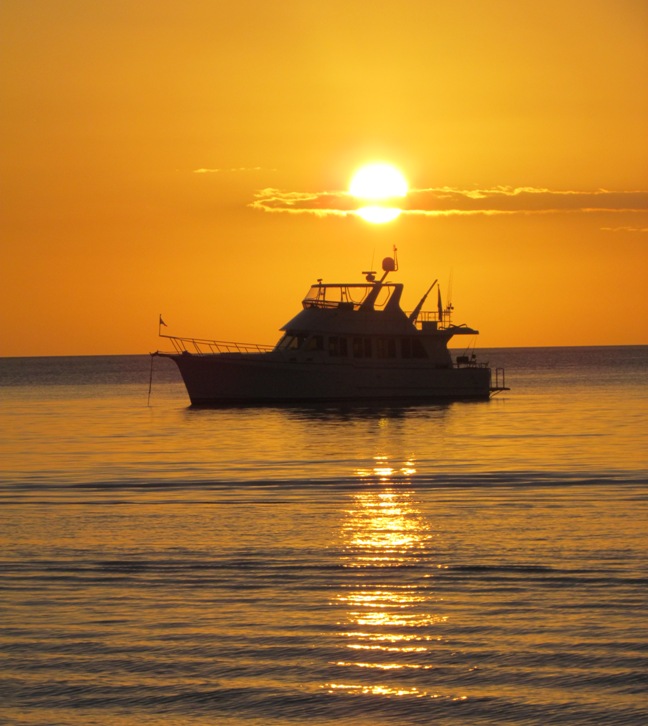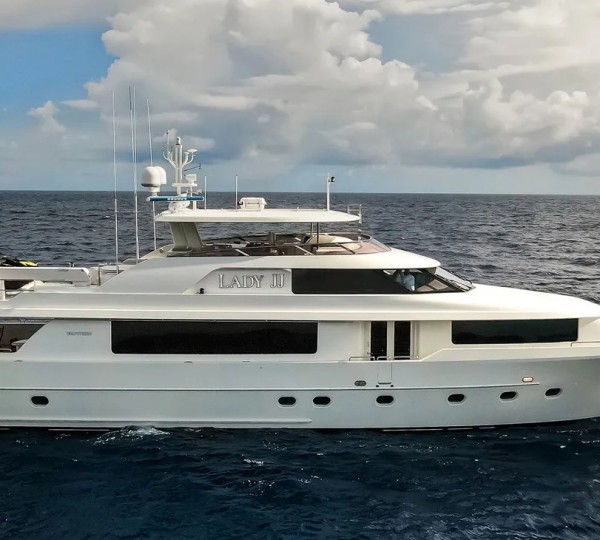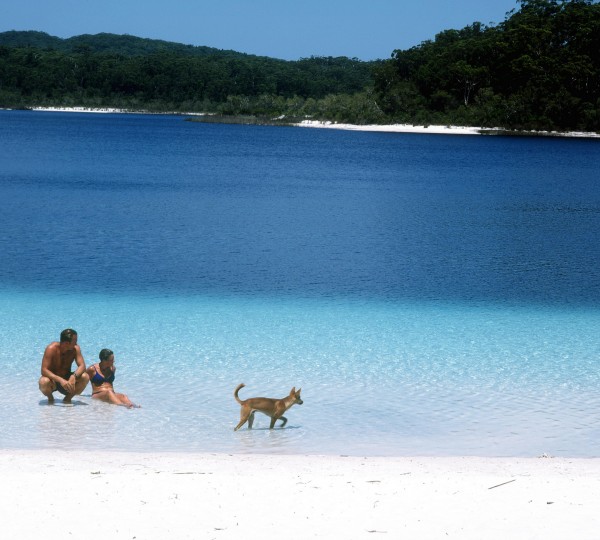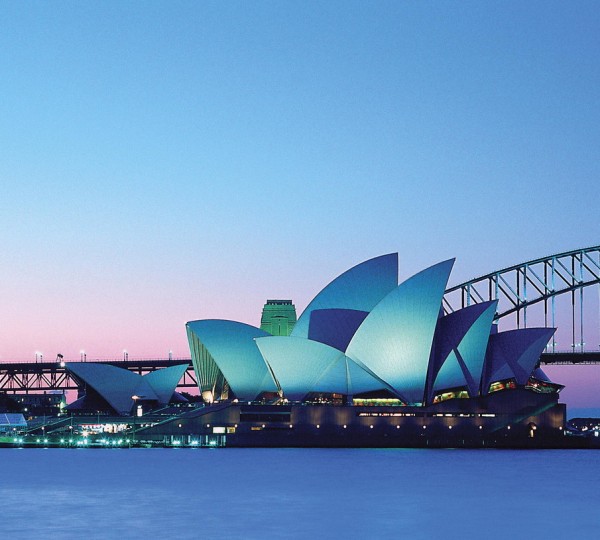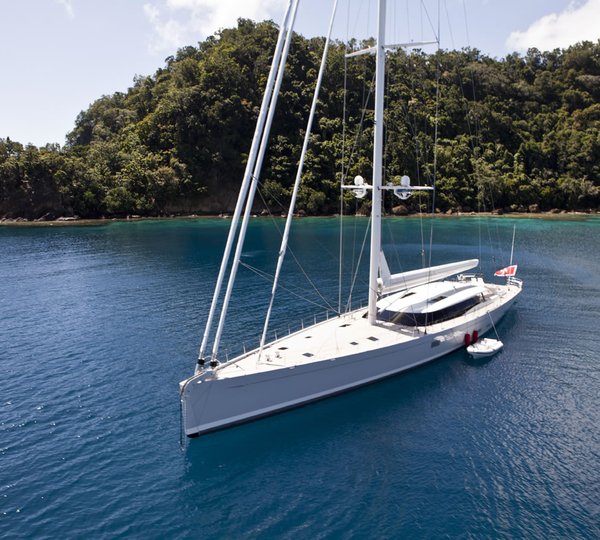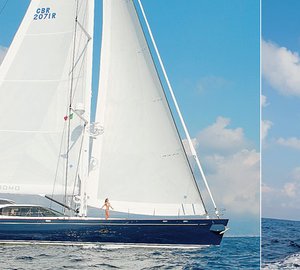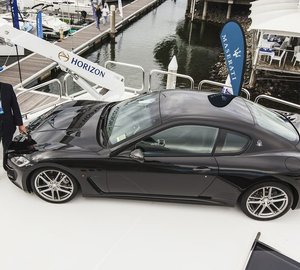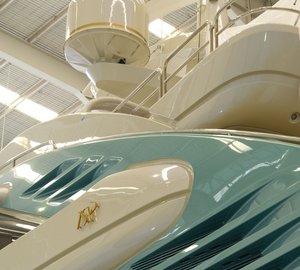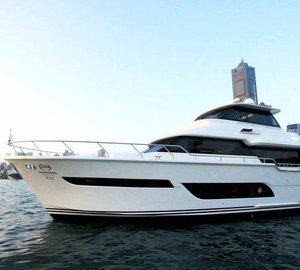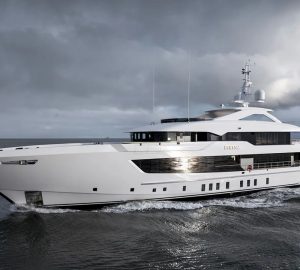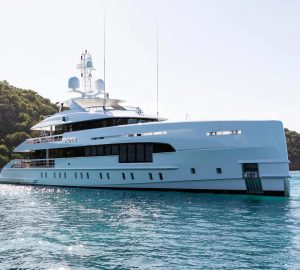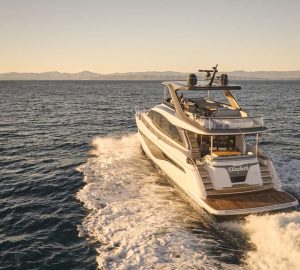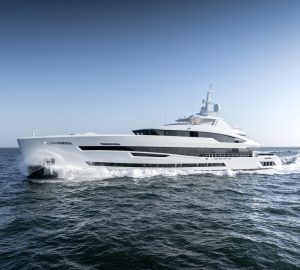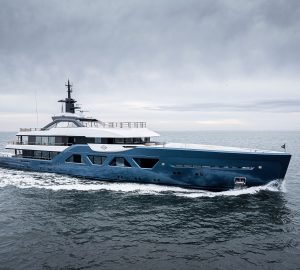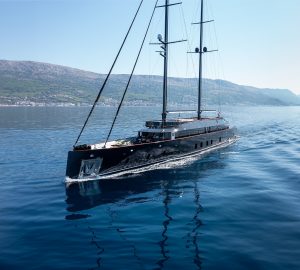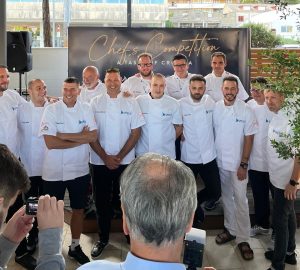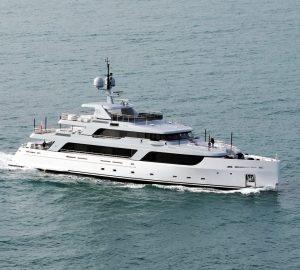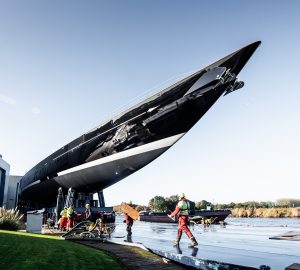Sighting a whale a few hundred metres away as it plays in the ocean is a thrill for most people. A close encounter is rare. The families who participated in the annual Clipper Fraser Island Regatta 2011 are still talking about one of the most extraordinary encounters.
“They were right beside us,” said John Seymour who was on his first regatta, having taken delivery of his Clipper Cordova 48, My Poet, only a few weeks earlier.
“We were cruising north toward the northern tip of Fraser Island when a pod of three or four surfaced,” he said. “We all stopped and waited. Incredibly, the whales came right up to the boats, raising their heads or swimming under the boats.
“I’m still not sure whether they were looking at us or we were looking at them. They lifted their heads out of the water beside the boats and we could look right into their eyes. They are beautifully curious creatures.”
Clipper’s Brett Thurley said a few brave boaters even donned swimming masks to get a sight of the massive creatures under water.
“Of course, none of us left the boats,” he said. “We simply stopped the boats and allowed the whales to decide how close they wanted the encounter. But we could almost reach out and touch them. Incredible!
“They were obviously impressed by our Clippers!”
Another first-time Clipper owner, Jack Heaton, also watched the whales in awe.
“They came up to our boat and had a good look around,” he said. “They stayed with us for quite some time then went on to the next boat.”
Irving and Di Korman on board their Clipper 40, “The Dolphin”, were old hands at whale watching. They had experienced the creatures during last year’s Clipper Regatta. But still they were awe-struck.
“They stayed with us for perhaps 90 minutes,” said Irving. “It was a once-in-a-lifetime experience.”
The Kormans’ Clipper is a full displacement design so they were grateful for the sense of camaraderie among all the boats that everyone kept a steady pace.
“Most of the Clippers in the regatta are semi-displacement and can run at speeds around 20 knots,” he explained. “Our displacement Clipper is happy and comfortable around nine knots. So the fleet simply maintained our cruising speed. It kept everyone together throughout the eight days.”
The cruise took in anchorages from Moreton Bay to the Triangle Cliffs on Fraser Island and included nine boats during the event including Clipper Heritage 40s, Cordova 48s and even one of the newly released Cordova 45s.
Owners joined the regatta from Gold Coast, Brisbane and some from New South Wales who were heading south after visiting north Queensland. They joined at Fraser Island.
The Gold Coast and Brisbane boats met at Dunwich at the northern end of North Stradbroke Island on the first day. They rafted up and sheltered from stiff south-easterly winds and everyone enjoyed fresh prawns and bugs provided by the Clipper team along with a few drinks.
“The first night raft-up gives everyone a chance to meet and chat,” explained Brett. “We had five new boats and crews on this trip so it was great for them to talk with others who had experienced our regattas.”
The Clipper team included skipper Jeremy Cooper who spent time on each owner’s boats during the regatta, offering tips and showing the new owners some of the technicalities of their boats.
For both John Seymour and Jack Heaton, the service was welcome.
“We took delivery in June. So Jeremy’s tips were greatly appreciated,” he said. “A shakedown cruise such as this is a fantastic way to learn about the capabilities of the new boat.”
Jack Heaton had even less time to trial his new Cordova 48 motor yacht Barcoo, before stocking up and heading north for the regatta.
“The Clipper team did an incredible job to commission the boat and have it ready just a few days before we set out,” he said.
“We encountered quite difficult seas both heading north and coming home. These included beam seas and 30 knots of wind at times. I was really impressed with the way the Clipper handled the conditions.”
The fleet headed to Mooloolaba on day two and tied up at the marina in plenty of time to stroll down the road to Fish on Parkyn restaurant.
The next day’s departure was timed to perfection to cross the Wide Bay bar as a group at high tide approximately 2pm and the boats headed to Tin Can Bay marina for the evening.
Clipper owners John and Gayle took everyone into town for a superb dinner at the Black Cockatoo restaurant which serves fresh local seafood.
“The dinner gave us the opportunity to introduce our Wide Bay owners to the group,” said Brett. “The southern crew enjoyed the sheltered waters after a couple of big days in southerlies and the bar crossing. They were looking forward to some protected cruising.”
The weather improved and everyone was anxious to head north. Next port of call was the delightfully named Yankee Jack Creek, south of the Kingfisher Resort.
The following day began with rain, but it cleared as the boats rounded Moon Point to head along the northern beaches of the island.
“We saw a whale and her calf outside Kingfisher Resort,” said Brett. “That was a strong sign that we would be seeing plenty of whales further north. And we did. The northern bay area is teeming with whales relaxing, breaching and raising their young.”
By the time the fleet arrived at the triangle cliffs, the water was glassy and the area remained completely protected from wind for three days.
First order of the day was to set up the first beach barbecue with some excellent wagyu steaks followed by a great fire on the beach, some drinks and plenty of stories particularly from the contingent of New South Wales owners who joined on their way home from cruising in north Queensland.
The next day was dedicated to fishing and whale-watching. The fleet had been cruising for about two hours, closing on the northern tip of Rooneys Point, when they spotted the pod of whales that would entertain them for the next hour and a half.
“When they finally drifted off, we returned to our fishing venture,” said Brett.
“Skipper Jeremy found some fish and we landed a yellowfin tuna which we enjoyed on the beach barbecue that night along with a few drinks, a beach bonfire and a very curious dingo.”
The weather began to turn north at the end of the week, signalling time to head home. The fleet reached Gary’s Anchorage and settled down, preparing for an early bar crossing next day in a 15-knot northerly.
“Bar conditions were lumpy so high concentration and good skippering was required,” said Brett. “We all made it through safely of course. We were lucky that the winds remained north-westerly for most of the return voyage although it did pick up to 30 knots and storming as we pulled into Mooloolaba that evening.
“We are already planning next year’s event.”

